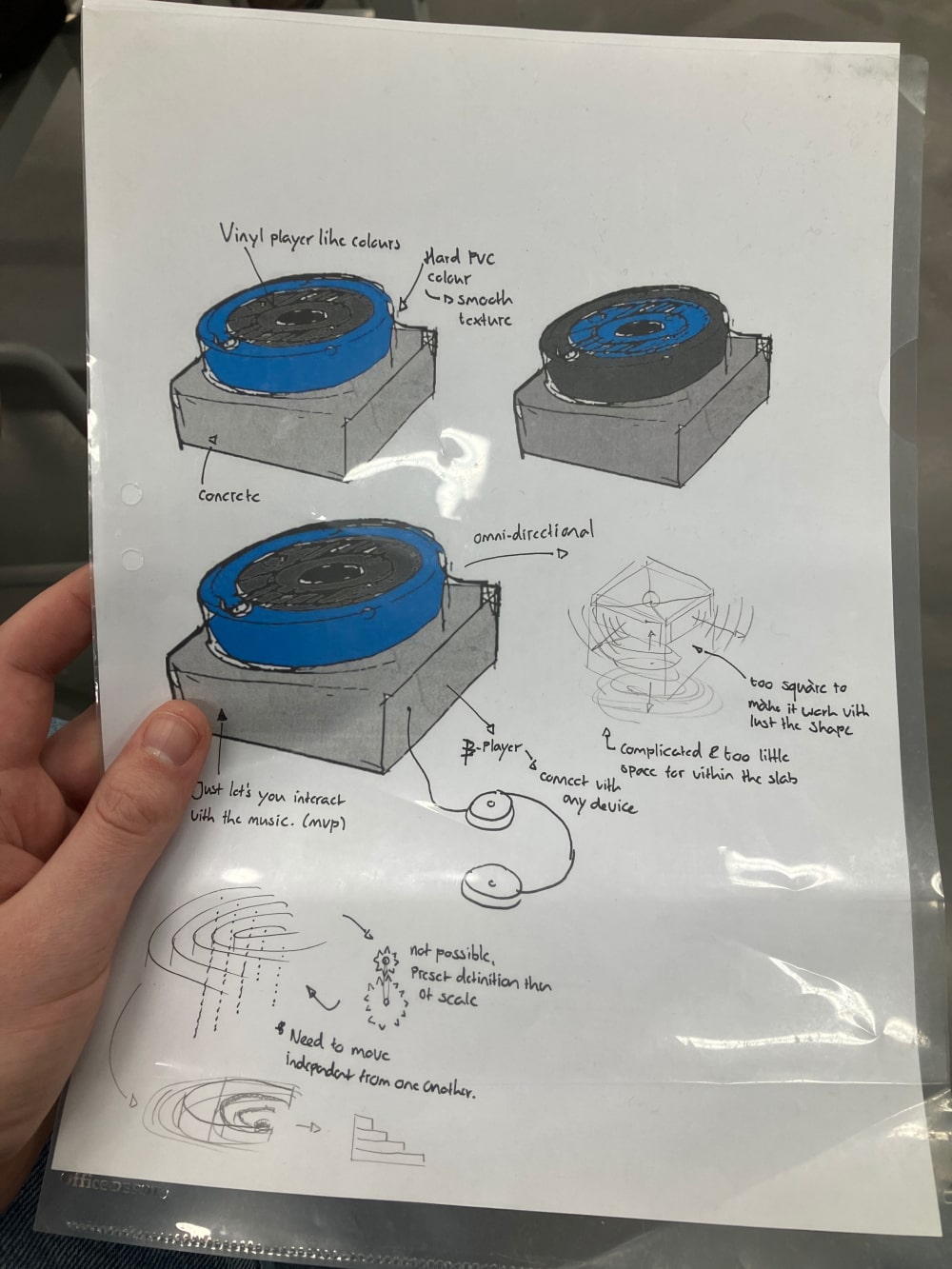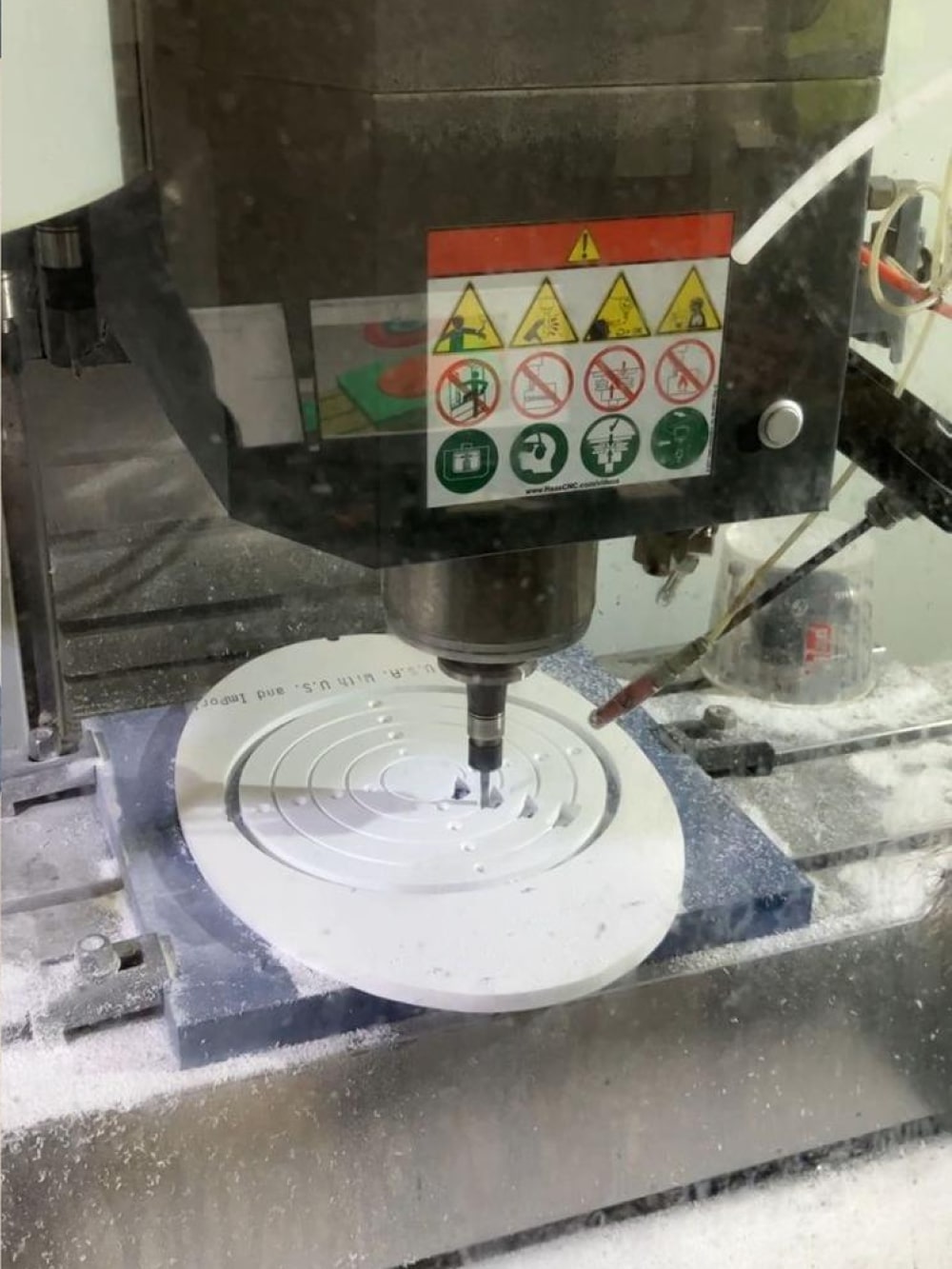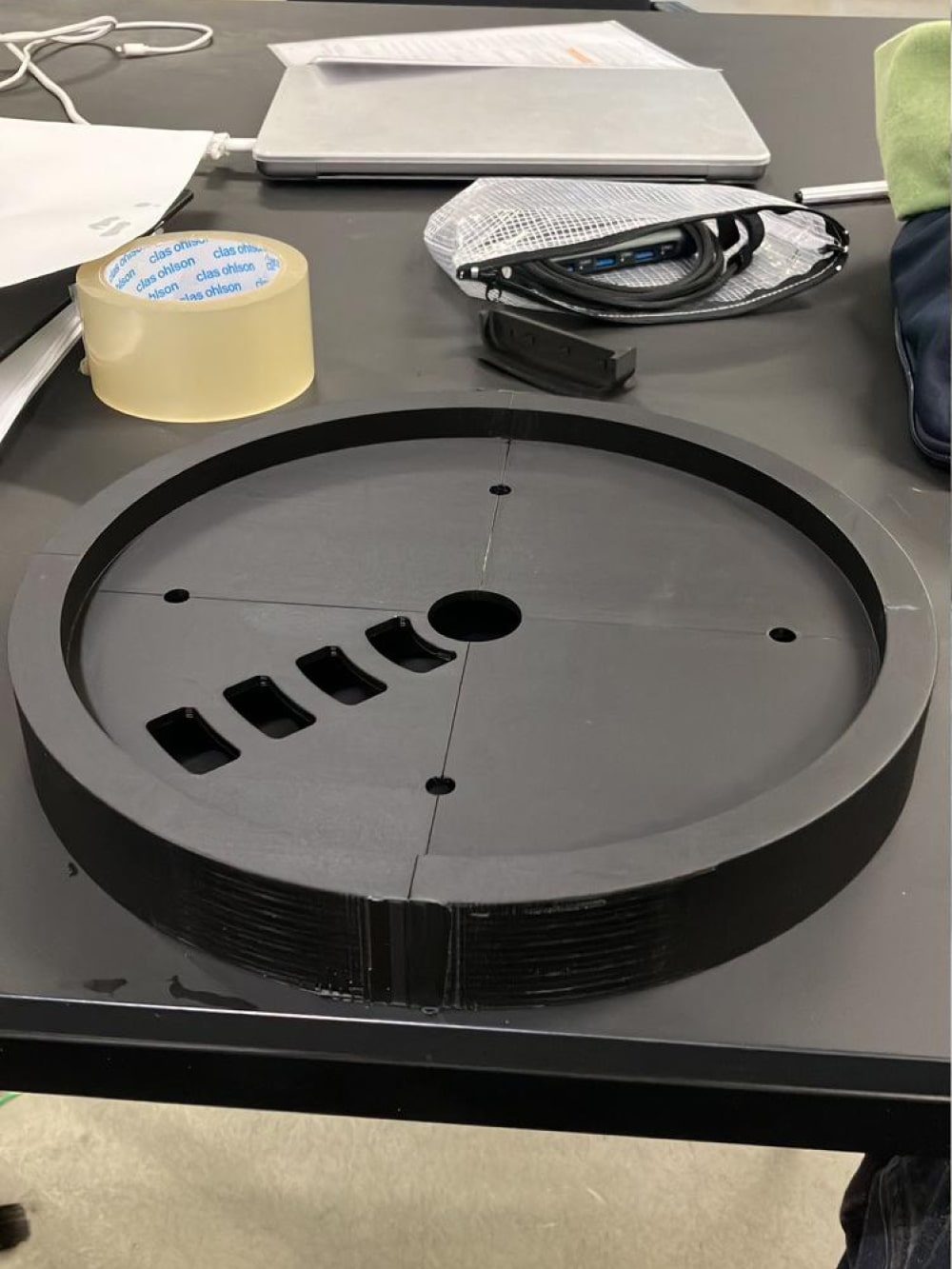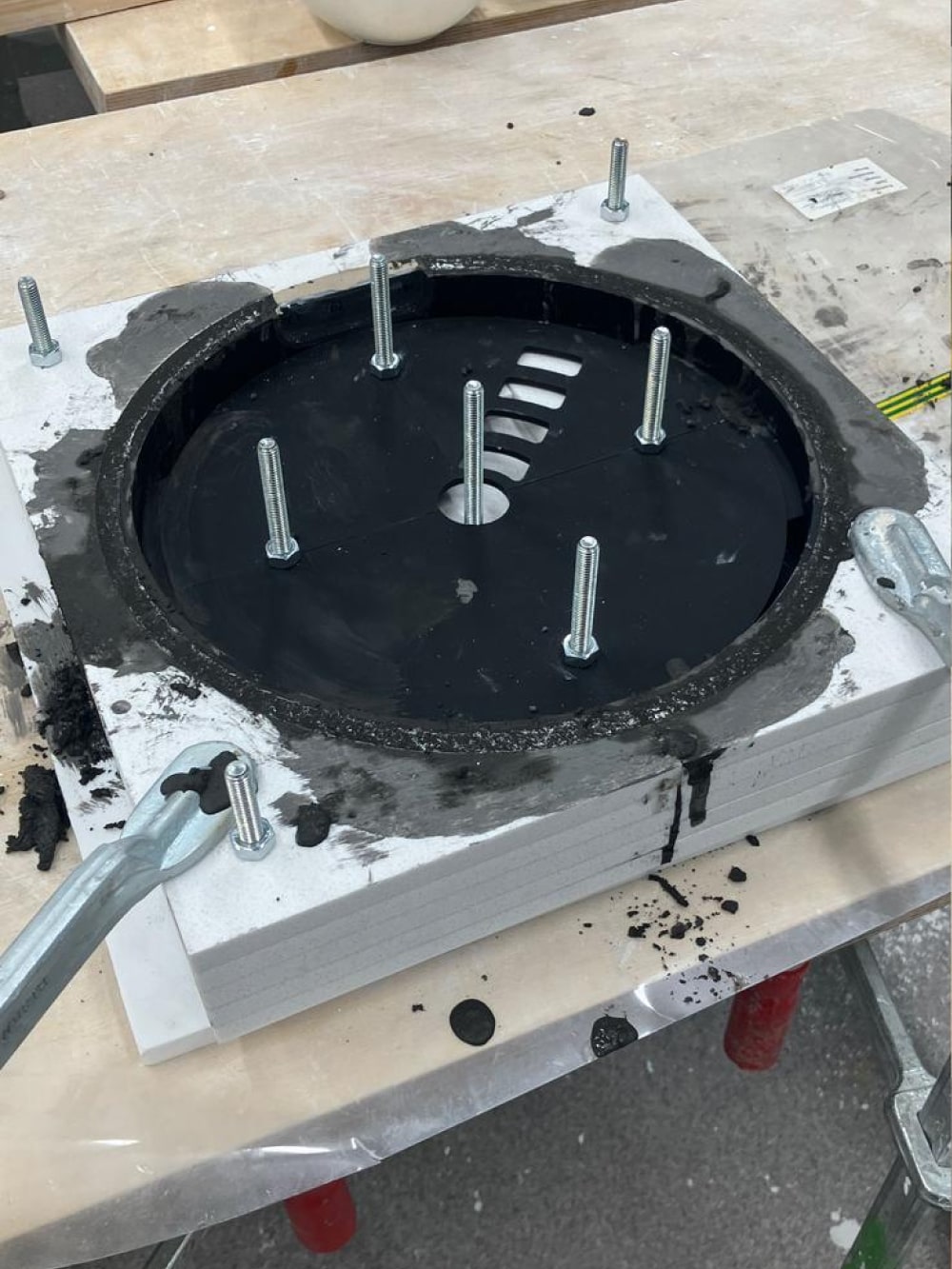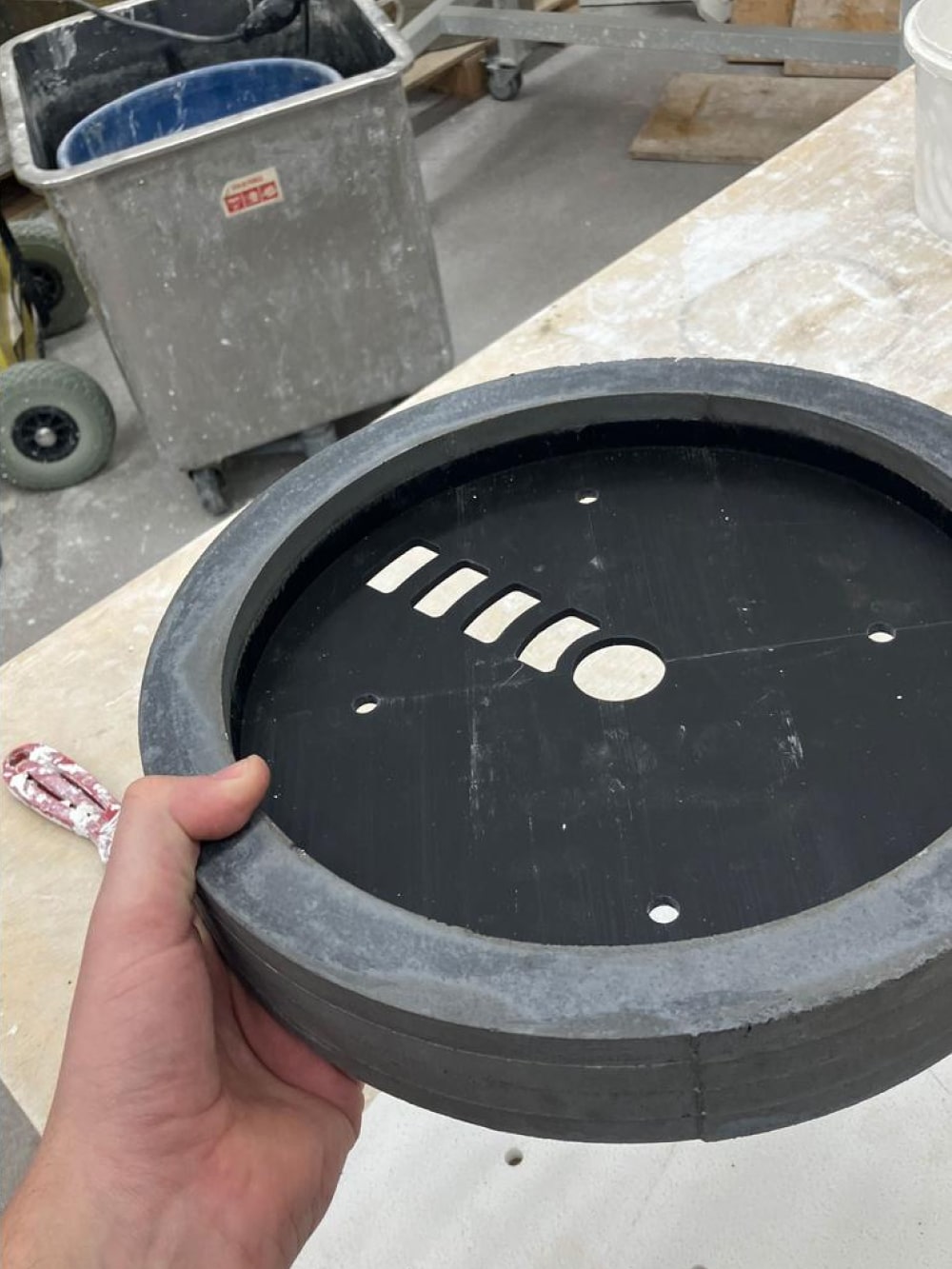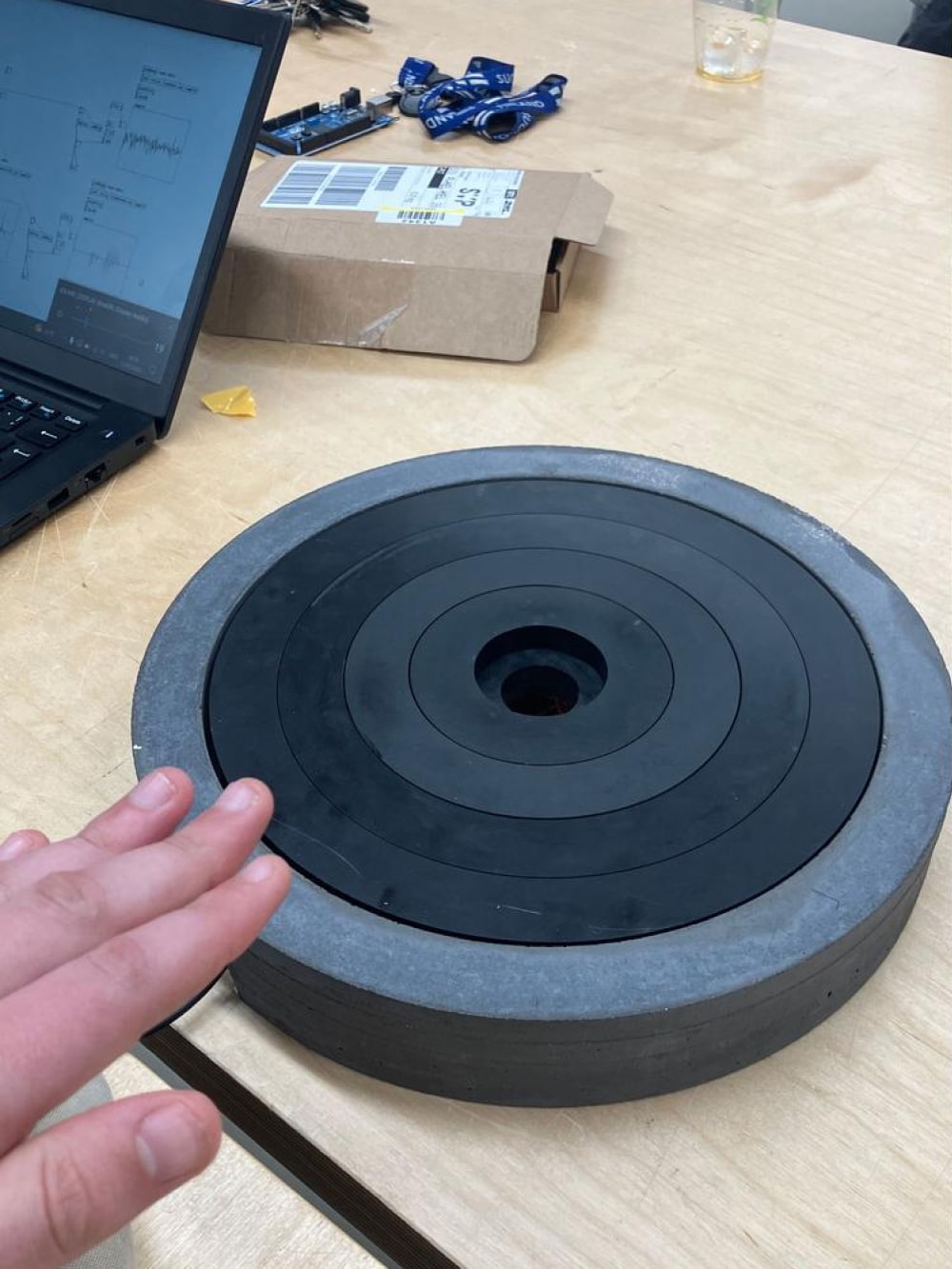SMR-2 (Stem Model Ring Player)
The SMR-2 player, an interactive audio device, revolutionizes the way we engage with music. Its core feature is the ability to manipulate individual elements of a song - bass, instruments, vocals, and drums - through user-controlled sliders. Intended to facilitate a unique experience where listeners actively participate in the listening/composition process. Basically allowing users to “build” up a song while listening.
| ID: | #018.23 |
| Status: | Completed Prototype |
| Client: | Genelec |
| Year: | 2023 |
| Collab: | n/a |
| Discover: | n/a |

Challenge
To create an intuitive audio experience that enables users to interact with and appreciate individual elements of a song.
We live in an age where infinite playlists and streaming services have become the norm. What does that mean to our individual relationship with a song? Are we choosing quantity over quality? Is our experience of listening to a solitary piece of music today, fundamentally different from the times of vinyl and CDs?
I interviewed 100 people in their twenties about their listening experience and realized the following: people listen to music nowadays mostly as type of background ambience. Therefore, I hypothesised that if we want to increase our perception of “valued” music, we should let people become those that appreciate music the most - composers.
I wanted to design a device that not only allows listeners to engage with music at a granular level but also encourages an appreciation of song composition. It should bridge the modern convenience of digital music and the tactile, immersive experiences of vinyl and CDs, fostering a deeper connection with each song.
I interviewed 100 people in their twenties about their listening experience and realized the following: people listen to music nowadays mostly as type of background ambience. Therefore, I hypothesised that if we want to increase our perception of “valued” music, we should let people become those that appreciate music the most - composers.
I wanted to design a device that not only allows listeners to engage with music at a granular level but also encourages an appreciation of song composition. It should bridge the modern convenience of digital music and the tactile, immersive experiences of vinyl and CDs, fostering a deeper connection with each song.


Approach
Conceptualize an interactive audio player that dissects and manipulates song layers.
Rapid-prototyping identified shape and size criteria to have the device user-friendly, engaging, while at the same time heavy enough, to function as a center piece within living rooms. Following, work was done on the internal parts of the himacs-based sliders that function as the overal interface of the devise. A ball-bearing system was CNC-milled into place, with additional grooves for a binary sensor strip to read the position of the himacs sliders. Further refinement was done by developing a 3D-base part around which a concrete mould was based for securing the device and sliders into place.
The second part of this process was coding and electronics of the SMR-2 player. A major part of the project’s resources were spent on figuring out the sensitivity of the light gate sensors, MIDI capabilities through small chipset, as well as logical circuitry schema to allow the sliders to function in both directions. Afterwards, I had to build a small piece of interface software with the Spleeter neural net to allow for the ‘splitting’ capabilities. This is still in need of further refinement, unfortunately.
The second part of this process was coding and electronics of the SMR-2 player. A major part of the project’s resources were spent on figuring out the sensitivity of the light gate sensors, MIDI capabilities through small chipset, as well as logical circuitry schema to allow the sliders to function in both directions. Afterwards, I had to build a small piece of interface software with the Spleeter neural net to allow for the ‘splitting’ capabilities. This is still in need of further refinement, unfortunately.
Outcome & Impact
Showing promise as a novel way of interaction during the listening experience, but requiring further refinement.
The SMR-2 player allows users to intimately interact with the layers of a song, deepening their understanding and appreciation of music composition. Despite being in the final stages of development, it has already shown promise in enhancing user interaction and creative expression, thanks to its blend of sophisticated mechanics, electronics, and software. It was awarded full marks for the "Product and Form" course at Aalto University.
Reflection
A solo journey from concept to prototype, reimagining music interaction through expert collaboration.
This project was completed over a period of four months, in which I ideated/prototyped/refined the SMR-2 from concept to near-completion as a one-man-show. Over this period I spoke with tens of different experts, ranging from audio engineers at Genelec to workshop manufacturers and learned a ton about physical prototyping. This product is nowhere near production ready, but marks an interesting attempt at changing our relation with music.

